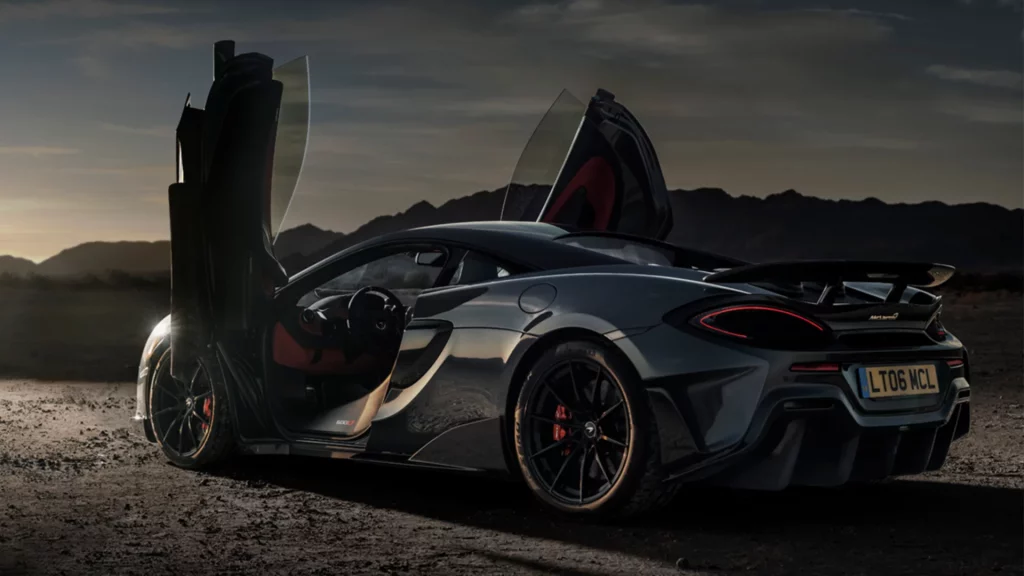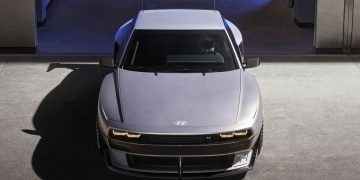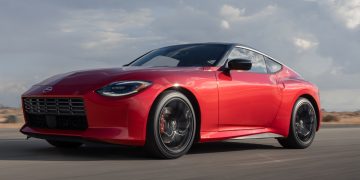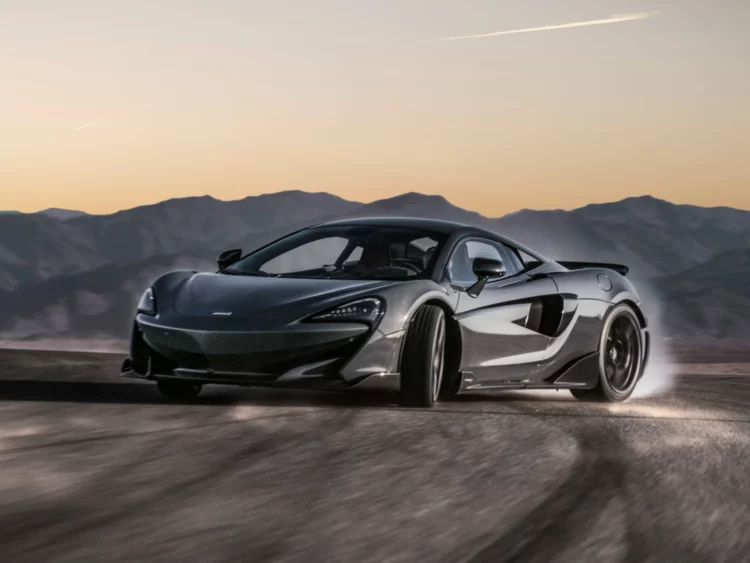Introduction: The Genesis of McLaren – From Racing Roots to Road Cars
McLaren Automotive is a name that resonates with automotive enthusiasts, sports car aficionados, and motorsport fans alike. Known for its groundbreaking innovations, engineering precision, and performance capabilities, McLaren has grown into a globally recognized supercar manufacturer. But how did this iconic brand evolve from a humble racing team to a manufacturer of some of the world’s most sought-after road cars?
The journey of McLaren is rooted in the vision of Bruce McLaren, a New Zealand-born engineer, inventor, and race car driver. Established in 1963 as Bruce McLaren Motor Racing, the company started by building racing cars and quickly made a name for itself in the world of Formula 1. Over time, McLaren evolved, not only becoming a racing powerhouse but also pushing the boundaries of road car technology.
This article will explore the brand’s rich history, engineering prowess, technological breakthroughs, and lasting legacy. From its early days in motorsport to its iconic road cars, we’ll analyze McLaren’s remarkable journey and how it shaped the high-performance car industry.
1. McLaren’s Racing Origins: The Beginning of a Legacy
The Birth of McLaren Racing
McLaren’s story began with Bruce McLaren, a talented young driver who achieved early success in Formula 1. After a successful career with teams like Cooper, Bruce formed his own racing team in 1963, making McLaren one of the most respected names in motorsport. The team’s first F1 victory came in 1968, just five years after the team was founded.
McLaren’s success in F1 was built on a foundation of engineering excellence. From the beginning, Bruce believed that lightweight construction, aerodynamics, and performance-oriented design would set his cars apart. In 1966, McLaren introduced the M2B, a car that pioneered the use of monocoque construction in Formula 1—a technology that would later become fundamental in McLaren’s road cars.
Engineering Innovations in Racing
The McLaren MP4/4, introduced in 1988, remains one of the most successful Formula 1 cars of all time. Designed by Gordon Murray and Steve Nichols, the MP4/4 won 15 out of 16 races in the 1988 season, securing both the Driver’s Championship and Constructor’s Championship. The car’s design featured an incredibly compact engine, combined with advanced aerodynamics, both of which would become the blueprint for McLaren’s future road cars.
It was in the world of Formula 1 that McLaren honed its engineering knowledge, and these lessons would influence every aspect of its subsequent road car production. The principles that made McLaren successful in racing—lightweight materials, aerodynamic performance, and advanced engineering—were integrated into the company’s development of road-going vehicles, setting the stage for the creation of some of the world’s most advanced supercars.
2. McLaren’s First Road Car: The McLaren F1 (1992)
The Transition from Racing to Road Cars
While McLaren was dominating Formula 1, the company’s ambitions stretched beyond the race track. In the late 1980s, McLaren Cars (as McLaren Automotive was known at the time) began planning its first-ever road-going vehicle. The goal was clear: to build a car that combined race car performance with luxury and comfort. The result was the McLaren F1 (1992), a car that would go on to define the brand’s engineering philosophy for decades to come.
The McLaren F1 remains one of the most iconic supercars in history. Designed by Gordon Murray, the car was a feat of engineering, featuring a lightweight carbon-fiber monocoque chassis, a naturally aspirated BMW V12 engine that produced 627 horsepower, and a top speed of 240 mph. At the time of its release, the F1 was the fastest production car in the world, outpacing even the Ferrari F40 and the Porsche 911 Turbo.
Innovation Beyond Performance
While performance was paramount, the McLaren F1 was also a highly innovative and luxurious vehicle. It featured driver-focused ergonomics, with a central driving position flanked by two passenger seats. The interior was finished with the finest materials, including gold leaf-lined engine bays to help regulate temperature.
The F1’s groundbreaking design was not limited to performance or luxury. McLaren’s use of carbon-fiber construction in the F1 was a world-first for a production car and laid the foundation for the company’s future approach to car building. McLaren’s continued use of lightweight materials and cutting-edge engineering would become defining elements of the brand’s road cars in the years to come.
3. McLaren’s Rise: The MP4-12C and the Birth of McLaren Automotive
The MP4-12C: The Return of McLaren to Road Cars
After the success of the F1, McLaren took a break from building road cars to focus on its Formula 1 commitments. However, in 2010, the company unveiled the McLaren MP4-12C, signaling the return of McLaren as a road car manufacturer. The MP4-12C was a statement of intent: a car built with the same principles that had made McLaren a dominant force in motorsport.
The MP4-12C was powered by a 3.8-liter twin-turbocharged V8 engine, producing 592 horsepower. With a carbon-fiber monocoque chassis and a focus on aerodynamics and lightweight performance, the MP4-12C was a true high-performance machine. McLaren’s move into the high-end supercar market, with models like the MP4-12C, set the stage for future innovations and placed McLaren squarely in the Ferrari and Lamborghini battleground for performance dominance.
Engineering Excellence: The MonoCell Chassis
A significant breakthrough in the MP4-12C was the use of the MonoCell chassis—a single-piece carbon-fiber structure that is both incredibly rigid and lightweight. This technology would become a cornerstone of McLaren’s road cars, allowing for superior handling, stability, and safety. The MonoCell chassis and McLaren’s use of carbon-fiber technology would set the company apart in the world of supercar manufacturers, pushing the boundaries of performance while ensuring the vehicles remained lightweight and agile.

4. McLaren’s Supercar Range: The 650S, 720S, and Beyond
The McLaren 650S: The Evolution of the Supercar
Building on the success of the MP4-12C, McLaren introduced the 650S in 2014. With more power, better aerodynamics, and refined handling characteristics, the 650S solidified McLaren’s position in the supercar market. The 650S featured a 3.8-liter twin-turbocharged V8 that produced 650 horsepower and was capable of accelerating from 0-60 mph in 3 seconds. The 650S featured advanced technologies, such as the Proactive Chassis Control, which offered superior handling and ride quality, and the Dihedral doors that became a signature feature of McLaren’s design language.
The 720S: A New Benchmark in Performance
In 2017, McLaren released the 720S, a car that raised the bar for both performance and design. The 720S is powered by a 4.0-liter twin-turbo V8, producing 710 horsepower, and it can accelerate from 0-60 mph in 2.7 seconds. The 720S featured advanced aerodynamics, active suspension systems, and a lightweight carbon-fiber structure that gave it unparalleled agility and speed.
The 720S has been widely regarded as one of the best supercars in the world, earning praise for its incredible performance, handling, and design. The Monocage II carbon-fiber chassis is an evolution of McLaren’s earlier MonoCell technology, making the 720S even more rigid, lightweight, and performance-focused.
The McLaren Speedtail: The Ultimate Hyper-GT
In 2019, McLaren introduced the Speedtail, a hyper-GT that combined extreme performance with luxury and comfort. Powered by a 3.8-liter twin-turbocharged V8 paired with an electric motor, the Speedtail produces 1,035 horsepower and has a top speed of 250 mph. The Speedtail’s design is focused on aerodynamics, with a long, teardrop-shaped body that is both sleek and functional. The car’s futuristic design, along with its emphasis on driver experience, exemplifies McLaren’s ability to blend innovation with luxury.
5. McLaren’s Technological Innovations: A Focus on Lightweight Engineering, Aerodynamics, and Sustainability
Lightweight Engineering
One of McLaren’s defining features is its commitment to lightweight engineering. The use of carbon-fiber technology in the construction of the chassis, body panels, and interior has allowed McLaren cars to be incredibly lightweight and strong. This focus on weight reduction enables the cars to accelerate faster, handle better, and achieve higher top speeds while maintaining optimal stability.
Aerodynamics: The Key to Performance
Aerodynamics play a vital role in McLaren’s designs. From active aero flaps and rear spoilers to carefully sculpted bodywork, McLaren’s cars are designed to offer maximum downforce while minimizing drag. The brand’s active aerodynamics systems adjust based on speed and driving conditions, ensuring that the car’s performance is always optimized.
Sustainability: The Hybrid Era
McLaren has also embraced hybrid technology in its vehicles. Models like the McLaren P1 and the McLaren Artura have integrated electric motors alongside traditional combustion engines. These hybrid systems not only improve fuel efficiency but also enhance performance, offering a combination of instant torque from the electric motor and raw power from the V8 engine. As the automotive industry moves toward sustainability, McLaren continues to innovate with hybrid and electric technologies, ensuring the brand remains at the forefront of performance engineering.
6. McLaren’s Future: The Next Generation of Supercars and Hypercars
Embracing Electrification
Looking ahead, McLaren has committed to electrification as part of its future plans. The company’s Track25 strategy outlines plans for a fully hybrid lineup by 2025, with all future McLaren vehicles featuring hybrid powertrains. This transition is set to make McLaren’s cars more eco-friendly without compromising on performance.
Autonomous Technologies and Connectivity
While McLaren is primarily focused on driver engagement, the company is also exploring ways to incorporate advanced driver-assistance systems and smart technology into its vehicles. Features such as adaptive cruise control, lane-keeping assistance, and gesture-based controls will likely become more prominent in future models, adding a new layer of convenience and safety.
Conclusion: McLaren – A Legacy of Innovation, Performance, and Excellence
From its humble beginnings in Formula 1 to becoming a premier manufacturer of high-performance road cars, McLaren has continually pushed the boundaries of engineering, design, and technology. The company’s commitment to lightweight materials, cutting-edge aerodynamics, and hybrid performance ensures that McLaren remains at the forefront of automotive innovation.
As McLaren looks to the future, its ability to merge performance and sustainability will define the next generation of supercars and hypercars. With an unwavering focus on engineering excellence, McLaren’s legacy in the automotive world is set to continue for years to come.


































Discussion about this post